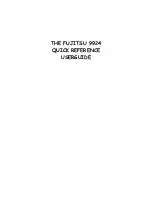
•
Call Pick-up Across the Network: This feature allows ringing calls, held calls and recalls to be picked up
by other stations through the network. A station user in a Branch Office can use the Directed Pick-up,
Hold Pick-up or Page/Park Pick-up codes to answers calls from the Main Office.
•
Call Transfer: Calls answered in one network node can be transferred to a station or station group in
another network node.
•
Caller ID: Caller ID in its various forms that are currently available (Analog CID Name and Number, ANI
Number, PRI Name and Number) will be transported across the network link with the original call.
•
Centralized Automated Attendant: The Samsung Voicemail provides the Auto Attendant Application.
The Samsung Voicemail can transfer callers to other stations or station groups in another Node. It can be
installed in any Node regardless of where the lines/trunks from the telephone company are connected.
Callers to Node A can be answered by the Samsung Voicemail in Node B, then transferred to Node C. An
incoming caller that dials an invalid extension number to the Samsung Voicemail can be routed after a
programmable number of attempts to a predetermined station or station group anywhere in the net-
work to receive assistance.
Note:The embedded voicemail of the OfficeServ 7200-S should not be used as the main Centralized Auto
Attendant/Voicemail node because of the limited port capacity. The OfficeServ 7200-S should only be
used as the remote node.
•
Centralized Operator/Attendant: A station in any Node may dial “O” and ring a designated Centralized
Operator/Attendant. When programmed, hold/transfer/camp-on/park recalls can be directed to the
Centralized Operator/Attendant in a network arrangement instead of the Local Operator within that
Node. Ring plan assignments will allow recalls to a Centralized Operator/Attendant during the day and
to the Local Operator after hours. There can only be one Centralized Operator/Attendant designated in
the network. Each Node must be set for either Local Operator or Centralized Operator/Attendant, but not
both.
•
Centralized Voice Mail with Message Waiting Lights: This feature allows one Voice mail system to be
shared by all stations in a multi-node network. This feature is only available with Samsung voice mail
systems. Users in one Node can call forward their calls to the voice mail system in another Node.
Messages left in the voice mail system will be indicated by lighting the corresponding voice message
button or lamp on any station in any Node of the network. Messages are retrieved by pressing the VMSG
button or calling the voice mail group number. In addition, display keyset user will receive softkey
options to navigate through the voice mail system. Softkeys include: PLAY, SAVE, DELETE, PAUSE FAST
FORWARD, REVIEW, REPLY, FORWARD, CALL and HELP.
•
DID with Pass Through: Incoming DID, DNIS or DDI calls can be routed through one switch across a net-
work link to be processed by the DID table of the destination switch.
•
Direct Station Selection and Busy Lamp Indication Across the Network: A Network Station key (NS) can
appear on extension “2101” in Node A. It is programmed as “NS2205” representing an extension in Node
B. This NS key will light Red when extension 2205 is on the phone. Station 2101 can press this NS key to
call extension 2205 in Node B. With this feature the CEO can see when the VP in New York is on the phone
or may call him with the press of a button. Any keyset can have multiple NS keys.
This feature is only sup-
ported with QSIG over IP networking.
•
Do Not Disturb (DND): This feature operates in the same manner as in a non networked switch.
•
Forward External: This feature operates in the same manner as a non networked system with the excep-
tion that, because calls across a network link are trunk calls, network calls do not follow the ICM FWD EXT
ON/OFF setting in MMC 210. It is therefore suggested that this setting be set to ON in a networked switch
to avoid confusion in operation between networked and non networked calls.
•
Group Overflow Across the Network: Calls to a station group in one Node may overflow after a program-
mable time to another station group in another Node.
4.23
Home Page
















































